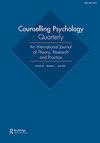Nonverbal immediacy cues and impression formation in video therapy
IF 1.6
Q3 PSYCHOLOGY, APPLIED
引用次数: 1
Abstract
ABSTRACT The increased use of video-mediated communication (VMC) due to the COVID-19 pandemic has led to widespread acceptance of mediated healthcare appointments. Mental health care is one area in which researchers might examine the effects of VMC. Therefore, the current study employed an experiment to test the relative influence of video therapists’ eye contact and gesture on a patient. Each participant was assigned to one of the four possible video conditions using a 2 (Gestures present versus absent) x 2 (Eye contact present versus absent) factorial design. Study participants (n= 359) rated actors portraying themselves as video therapists on items related to impression formation (i.e. likable, warm, understanding). Findings suggest that participants in the eye contact condition reported more positive impressions than in the no eye contact condition. Similarly, participants in the gesture condition reported more positive impressions than in the no gesture condition. However, gestures had a larger effect on impression formation than eye contact, and there was no interaction effect considering the combined impact of gestures and eye contact. These results contribute to understanding how nonverbal cues impact health outcomes in VMC. .视频治疗中的非语言即时性线索与印象形成
由于COVID-19大流行,视频中介通信(VMC)的使用增加,导致人们广泛接受中介医疗预约。精神卫生保健是研究人员可能会研究VMC影响的一个领域。因此,本研究采用实验来测试视频治疗师的目光接触和手势对患者的相对影响。每个参与者被分配到四种可能的视频条件之一,使用2(有手势与没有手势)x 2(有眼神接触与没有眼神接触)因子设计。研究参与者(n= 359)根据与印象形成相关的项目(如可爱、温暖、理解)对扮演视频治疗师的演员进行评分。研究结果表明,与没有眼神接触的参与者相比,眼神接触条件下的参与者报告了更多的积极印象。同样,手势组的参与者比没有手势组的参与者报告了更多的积极印象。然而,手势对印象形成的影响大于目光接触,考虑到手势和目光接触的共同影响,没有交互作用。这些结果有助于理解非语言线索如何影响VMC患者的健康结果。
本文章由计算机程序翻译,如有差异,请以英文原文为准。
求助全文
约1分钟内获得全文
求助全文
来源期刊

Counselling Psychology Quarterly
PSYCHOLOGY, APPLIED-
CiteScore
6.20
自引率
6.70%
发文量
30
期刊介绍:
Counselling Psychology Quarterly is an international interdisciplinary journal, reporting on practice, research and theory. The journal is particularly keen to encourage and publish papers which will be of immediate practical relevance to counselling, clinical, occupational, health and medical psychologists throughout the world. Original, independently refereed contributions will be included on practice, research and theory - and especially articles which integrate these three areas - from whatever methodological or theoretical standpoint. The journal will also include international peer review commentaries on major issues.
 求助内容:
求助内容: 应助结果提醒方式:
应助结果提醒方式:


